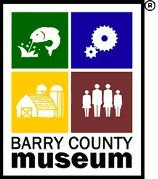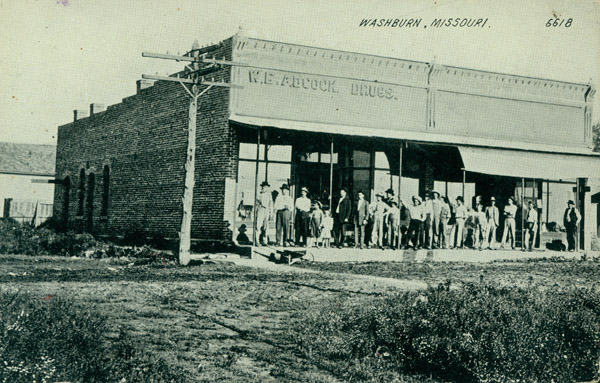Washburn
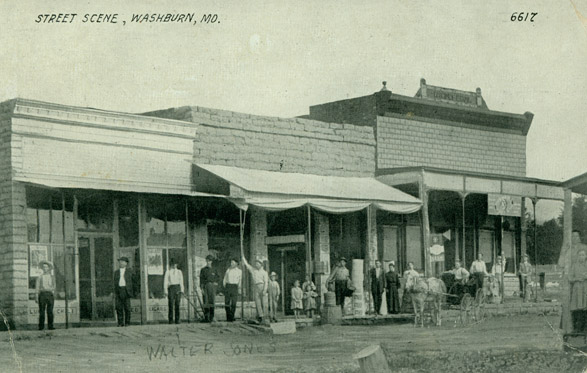 |
Washburn Postcard |
The town of Washburn was originally called Keetsville after J.T. Keets. When the Butterfield Overland Mail passed through Keetsville following the Old Wire Road in 1858 the town was composed of about 12 houses. Later the town name was changed to Washburn. The Frisco tracks were laid west of Washburn to a new town called O'Day, which was built near the tracks. A school and post office were erected halfway between the two towns. Eventually the two towns merged into one. Today, 1988, Washburn has a fine consolidated school. From Back to Barry |
Washburn from Early Barry County Washburn is one of the oldest towns in the county. We tum the yellow pages of time back to 1840, when Judge Cureson moved to Washburn, land where the town now stands. Later J. T. Keets became owner and laid off the town ca!1ed Keetsville. The town lay on what is now Highway 37, east side. It was and still is in town lots from the B. F. Wines' home to the Oswald home, including both places. The town square of Keetsville was located on Highway 37 and is still an open square. At that time the road through Keetsville was known as the Old Wire Road. The town square was given to Keetsville by Mr. Keets for a public square as long as it was used for that purpose and when not to be reverted back to Tom Keets. |
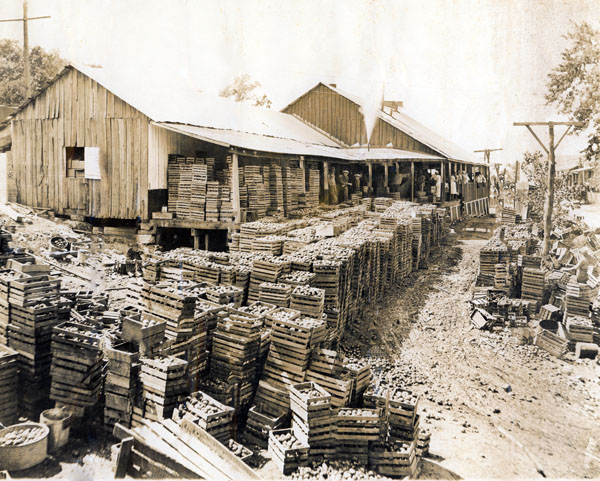 |
Walter Jones Canning near Washburn |
Washburn Prairie Settlement Samuel Washburn was the first settler on Washburn Prairie. In 1828 he settled on what is now the Sol Sparkman’s children's farms, near the Sparkman Spring. Mrs. Alene Sparkman-Parks lives in a house built on the old Washburn house site. Bryant Sparkman lives in hollering distance of Alene to the east and Mat about the same distance to the west. And, based on legendary history, by 1840 scattering houses dotted the prairie over the entire area. Among the earliest settlers were the Lecompts, Aults, Fosters, Adcocks, Durhams, Wines, Waldens, McClures, Frosts, Sparkmans, Weathers, and others. Traveling in wagon trains others came to the Prairie, seeking new homes in a new country, leaving their homes in Tennessee, Kentucky and other older states, and by 1857 such family names as Varner, Hopkins, Fulton, Longley, Rains, Hood, Lockwood, Parks, Montgomery, Herron, Cowherd, Martin, Lane, Lough were mentioned as new settlers on the Prairie. In early days of the settlement a Baptist Church was built near the site of the first dwelling house, a cemetery was platted just south of the church house. A stroll through this cemetery accompanied by tombstones so weathered, names cannot be read; tombstones with dates reaching back, far hack into the eighties. The first schoolhouse stood near where Alene Sparkman-Parks' home is now, (1960). Time leaves its mark, true of this settlement, though through the years the Prairie has weathered droughts, storms, panics and depressions it still remains a progressive farming and stock raising section of Barry County. |
 |
Washburn Strawberry Growers' Association |
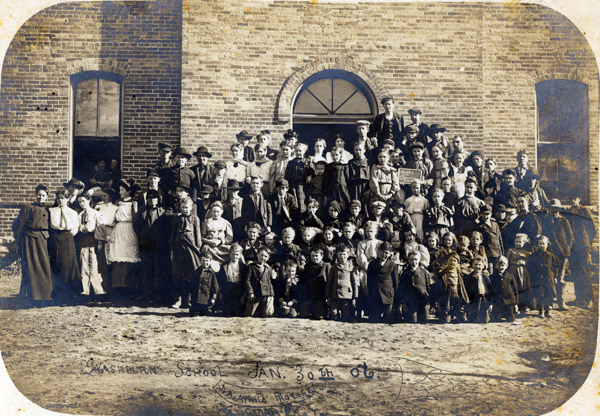 |
Washburn School January 30th 1906 |
Washburn in Goodspeed's 1888 History of Barry County |
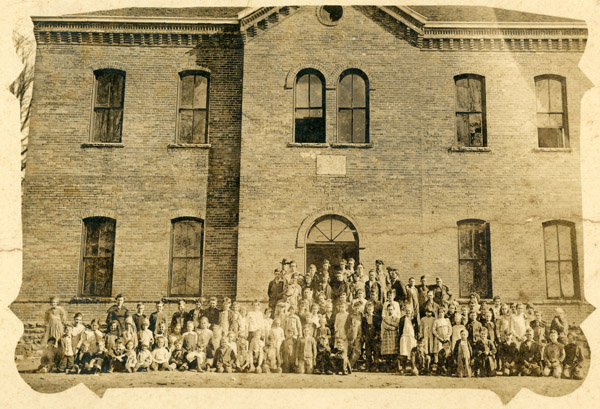 |
Old Washburn School in 1919 |
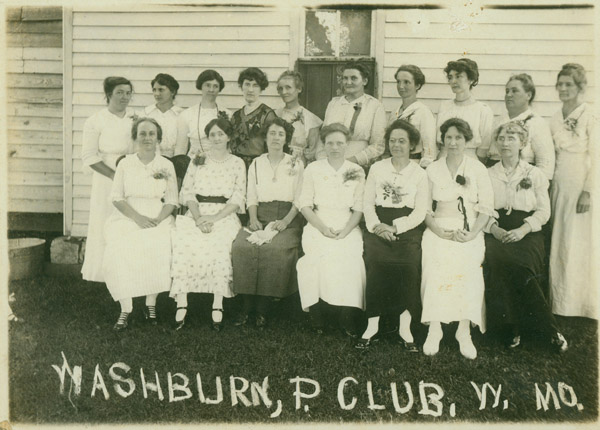 |
Washburn Progressive Club Organized 1913 |
Societies in Goodspeed's 1888 History of Barry County Washburn Lodge 200, A. F. & A. M., was chartered in May, 1860, but the charter was destroyed in 1861. Barry Lodge No. 367 was chartered June 20, 1870, with the following named members: William M. Pardue, A. R. Roller, James Holt, Charles Sparkman, Winter Frost, William Warner, Sevier Frost, Josiah Dougherty, J. M. Durham, Stephen Felker, H. K. Legg, J. H. McDonald, C. F. Copage, M. Hamilton, William M. McClure, Richard Merry, James M. Goff, James Lillard. The names of Masters are William M. Pardue, 1870-71-72-74; A. R. Roller, 1873; J. N. Brooks, 1875-84; A. F. Ault, 1876-77-78-80-82; W. K. Bayless, 1879-83-85; H. K. Legg,1881; F. N. Reese, 1886-87; J. T. Brooks, 1888. The names of Secretaries are Winter Frost, 1870-71; J. W. Elliott, 1872; W. R. Mitchell, 1873; B. F. Windes, 1874-75; H. K. Legg, 1876-77-78; A. F. Ault, 1879; W. K. Bayless, 1880-81-82; John M. Wasson, 1883; Winter Frost, 1884-85-86-87; A. D. Atchison, 1888. Present number of members is forty-eight. |
